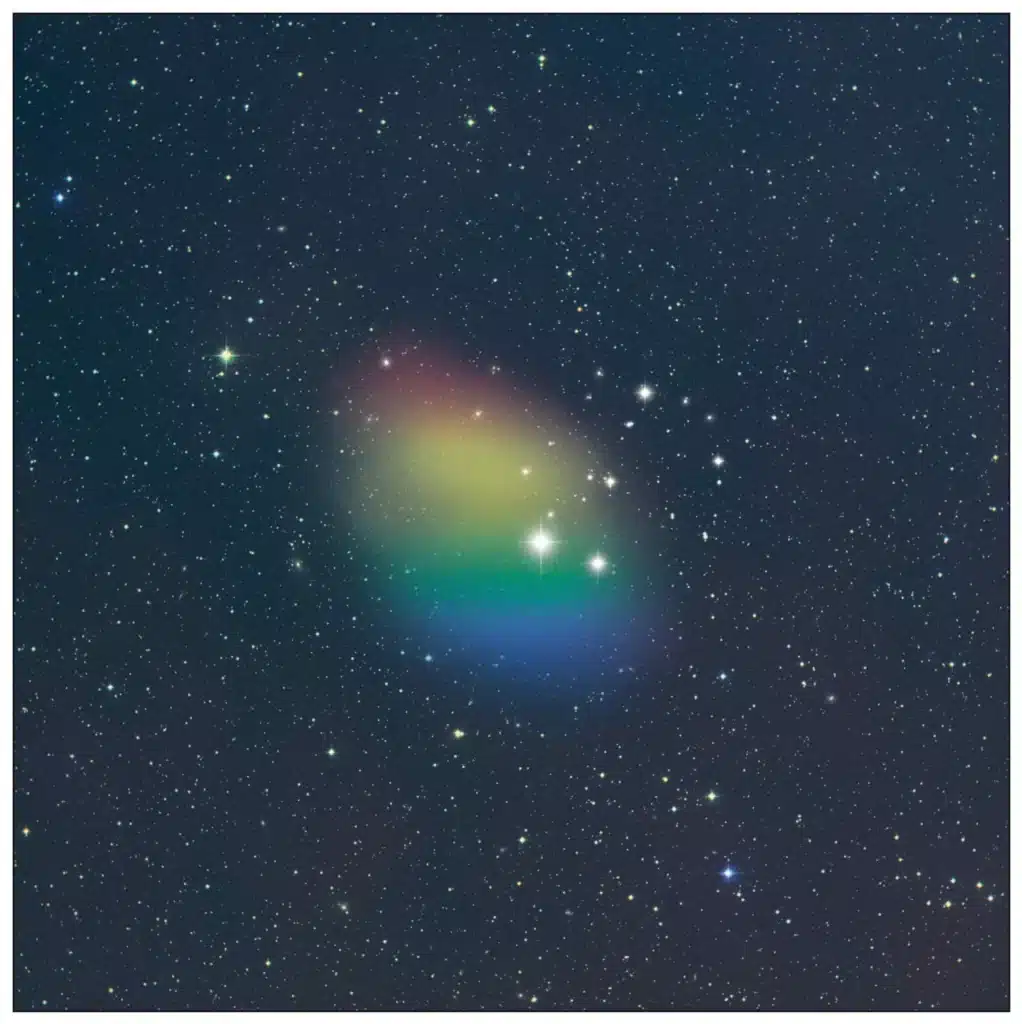Sometimes the greatest discoveries are ones that we never intended to find in the first place. That might be the case for one astronomer, who revealed an extraordinary finding made while surveying hydrogen gas in Low Surface Brightness (LSB) galaxies. This accidental breakthrough, involving a galaxy potentially consisting solely of gas and lacking visible stars, could reshape our understanding of galaxy formation and evolution.
The extensive survey encompassed 350 unique galaxies and utilized major radio telescopes worldwide, including the National Science Foundation’s Green Bank Telescope (GBT), the Arecibo Telescope, and the Nançay Radio Telescope. Karen O’Neil, senior scientist of the Green Bank Observatory, shared her discovery at the at American Astronomy Society’s annual meeting. “The goal was to determine the gas and dynamic masses of these ultra-diffuse galaxies,” she explains in a statement. “To do this, we observed them from several instruments, and many of them more than once.”
LSB galaxies, known for their diffuse nature, have long posed a challenge to existing theories of star and galaxy formation. Understanding these galaxies better illuminates the broader narrative of the cosmos, including the history of our own Milky Way.
The discovery of the unique galaxy, named J0613+52, occurred unexpectedly due to a serendipitous error. “The GBT was accidentally pointed to the wrong coordinates and found this object. It’s a galaxy made only out of gas—it has no visible stars,” says O’Neil. “Stars could be there, we just can’t see them.”

This accidental discovery highlights the galaxy’s distinct nature, as it seemingly comprises only gas, defying the typical characteristics of known galaxies.
“What we do know is that it’s an incredibly gas-rich galaxy. It’s not demonstrating star formation like we’d expect, probably because its gas is too diffuse,” O’Neil continues. “At the same time, it’s too far from other galaxies for them to help trigger star formation through any encounters. J0613+52 appears to be both undisturbed and underdeveloped. This could be our first discovery of a nearby galaxy made up of primordial gas.”
The peculiarities of J0613+52 raise more questions than answers. O’Neil suggests that a deep optical image in multiple bands could reveal more about this mysterious galaxy, pushing the boundaries of what we can observe in stellar light. Due to its low surface density of gas, J0613+52 is challenging to observe in other wavelengths.
O’Neil hints at future possibilities: “A full sky survey by an extremely sensitive instrument like the Green Bank Telescope could uncover more of these objects.”
This discovery not only underscores the serendipitous nature of scientific exploration but also opens a new chapter in our understanding of galaxy formation and the diverse structures of the universe. As astronomers continue to probe the depths of space, galaxies like J0613+52 remind us of the vast mysteries still awaiting discovery.












